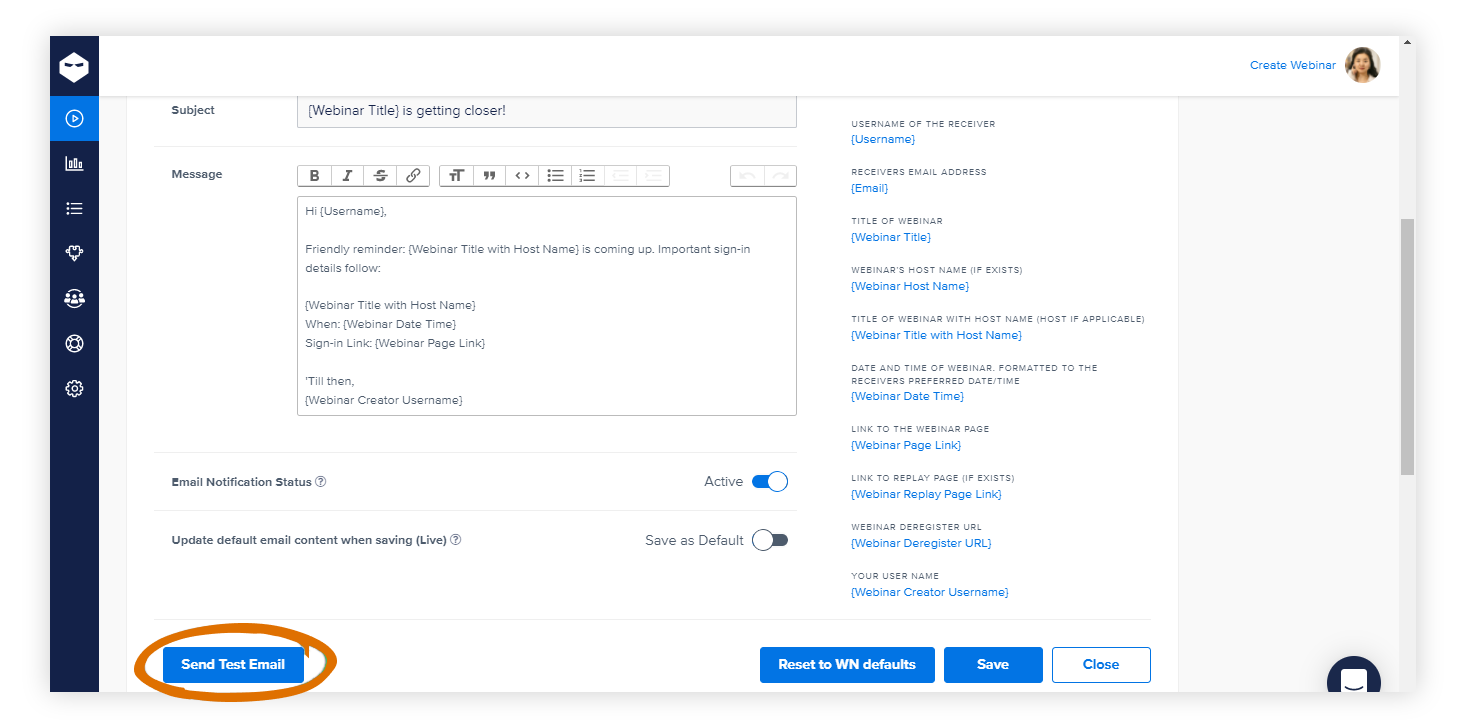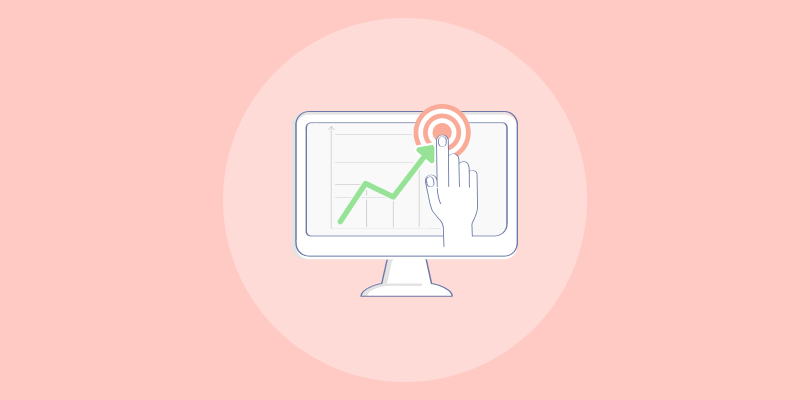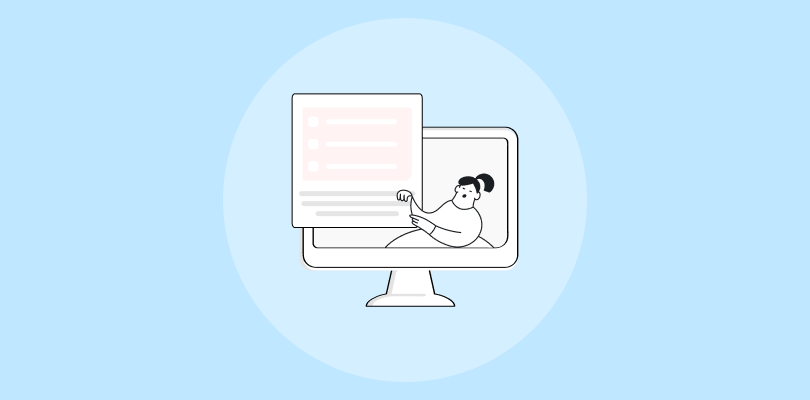After several webinar registrations, you expected a buzzing event, but the attendees didn’t turn up! Why?
-They forgot about the scheduled time.⏰
-They lost interest in the topic.😐
-Different time zone confusion happened.🌍
-They misunderstood the webinar’s key objectives.❓
As part of the webinar industry for nearly a decade, I’ve heard many reasons why registered attendees won’t show up. But you can always fix these issues with a simple, well-crafted webinar confirmation email sent at the right time.
So, how do you create one that gets people to show up?
Here’s a part of my experience on confirmation emails for webinars to help you bridge the gap between registrations and attendance.
What is the Purpose of a Webinar Confirmation Email?

“Email is a great way to connect and engage with your audience, as well as nurture relationships. However, if you fail to create targeted outreach programs that cater to your ideal client profile, you won’t see any growth in your pipeline or closed business.”




Sending a confirmation email webinar attendees can rely on provides key details and builds anticipation for the upcoming session. Here are some of the purposes it serves:
- Acknowledgment of Registration: This confirms to the recipient that their registration for the webinar was successful, giving them peace of mind that they are officially signed up.
- Event Details: It provides key information about the webinar, such as the date, time, topic, and a link to join. This ensures that participants have all the necessary details at hand.
- Reminder: It helps participants remember the event by including the option to add the webinar to their calendar. This reduces the chances of no-shows.
- Professionalism: It enhances the host’s credibility by showing professionalism and attention to detail in managing the webinar logistics.
- Engagement Opportunity: It offers an opportunity to provide additional resources, such as reading materials or special offers, which can increase engagement before the event.
- Support Information: It often includes contact details or technical support instructions in case the participant faces issues with logging in or attending.


What Are the Key Elements of a Webinar Confirmation Email?
A well-crafted confirmation email for webinars is essential for setting the right tone, providing clarity, and ensuring that attendees are fully prepared for the event.
Here are the key elements it contains:
1. Clear Subject Line
The subject line should immediately inform the recipient that they are confirmed for the event. This helps to stand out in their inbox and reassures them that the registration process was successful.
For example: A subject like “You’re Registered: [Webinar Title] on [Date]” is ideal as it concisely confirms the registration while also reinforcing the event title and date.
Avoid overly complex or vague subject lines to prevent confusion.
2. Personalized Greeting
Personalization can help create a connection with the recipient, making the email feel more relevant.
A simple “Hi [First Name]” adds a friendly touch and makes the registrant feel valued. Personalization also increases engagement and the recipient’s likelihood to open and read the entire email.
Including the name humanizes the communication, making it more than just another transactional email.
3. Webinar Title and Description
Reinforcing the webinar topic is crucial in this section. Include the title exactly as it was listed during registration so the attendee knows it’s the right event.
Add a brief description (1-2 sentences) reminding them of the key takeaways or topics the webinar will cover. This reiterates the value of the event and keeps excitement and interest alive.
It also serves as a quick reminder of why they signed up in the first place.
4. Date and Time
Be sure to provide the exact date and time of the webinar, clearly noting the time zone to avoid confusion, especially for international participants. Use a bold or distinct format for easy recognition.
To go the extra mile, include a link to a time zone converter or mention it if you expect global attendees. This ensures clarity and reduces the risk of no-shows due to time zone errors.
5. Join Link or Access Instructions
The join link is arguably the most important part of the confirmation email. Ensure the link to the webinar platform is easy to find and tested and functional.
Consider including simple instructions or even a step-by-step guide for attendees who might not be familiar with the platform.
Mention whether they need to download any software or plugins beforehand to avoid last-minute technical issues.
6. Add to Calendar Button
Include an “Add to Calendar” button (with options for Google, Outlook, Apple Calendar, etc.) to remind attendees of the event without them needing to input details manually.
Many registrants will appreciate the convenience, significantly reducing the chance they’ll forget to attend.
Also, ensure that the calendar invites include the link to join the webinar.
7. Additional Event Details
Use this space to provide further information to help the attendees prepare for the event.
If there are special guest speakers, list their names and provide brief bios or key points about what they’ll cover. Mention the webinar duration (e.g., “The webinar will be 45 minutes with a 15-minute Q&A”).
If any materials are needed, such as pre-reading or access to resources, provide those details here.
8. Technical Requirements and Support
This section helps attendees feel more prepared and comfortable. Mention any technical requirements, such as a stable internet connection or specific software.
Offering a way for attendees to test their setup in advance, such as a link to test their connection, can be very helpful.
Also, provide a support email or contact number in case they experience technical issues before or during the webinar.
9. Reminder of Value
Take a moment to reinforce why the registrant should attend. Briefly summarize the value of the webinar by highlighting key benefits.
For example, “You’ll leave with actionable tips for improving your SEO strategy” or “Gain exclusive insights from industry leaders on the future of marketing.”
This section serves as a gentle nudge to keep the registrant excited and less likely to forget or skip the event.
10. Call to Action (CTA)
In addition to the primary CTA, which is to attend the webinar, consider including a secondary call-to-action that adds value to the overall experience.
Encourage registrants to share the event with their colleagues or on social media if applicable.
You could say something like, “Know someone who might benefit? Share this webinar with your network!” This increases reach and engagement, possibly boosting attendance.
11. Contact Information
Clear contact information is essential if the registrant has any questions before the event.
List an email address or support line that can handle technical inquiries, questions about the content, or requests for more details about the event.
Offering this makes your organization appear more accessible and professional while also ensuring the attendee feels supported in case any issues arise.
12. Branding and Design
Ensure the email is visually aligned with your brand. This includes using your company’s logo, color scheme, and fonts to create a consistent and professional appearance.
Keep the design clean and organized, with ample white space, to make the email easy to read.
Using a branded template with visual consistency also builds trust and strengthens your brand’s presence.
Wish to get readymade webinar email scripts that sell effectively? Check Webinar Email Scripts that Sell
How to Write a Webinar Confirmation Email
A good webinar confirmation email effectively ensures your attendees feel informed, valued, and excited about the event. Here’s a step-by-step breakdown of how to write a webinar confirmation email:
1. Start with a Clear Subject Line
Make it easy for recipients to understand what the email is about and encourage them to open it. Keep it simple, concise, and to the point.
Example Subject Lines:
- “You’re Registered! [Webinar Title] on [Date]”
- “Webinar Confirmation: [Webinar Title]”
- “Your Spot is Confirmed! See You at [Webinar Title]”
| Pro Tip: Incorporate a sense of anticipation. Phrases like “We can’t wait to see you” or “Get ready for valuable insights” can build excitement. |
2. Open with a Warm and Grateful Greeting
Begin by thanking the recipient for signing up for the webinar. This creates a sense of appreciation and connection.
Example: “Thank you for registering for our upcoming webinar, [Webinar Title]! We’re excited to have you join us.”
| Pro Tip: Personalize the greeting by using the recipient’s first name. Personal touches can increase engagement. |
3. Provide Key Details at a Glance


Clearly outline the most important information so attendees can easily refer back to it.
Include:
- Date and Time: Make sure to include the time zone.
- Webinar Platform: Mention the tool being used (e.g., WebinarNinja) and whether any downloads are needed.
- Access Information: Provide the link to join, with instructions if necessary.
Example:
Here are the details of your upcoming webinar:
Topic: [Webinar Title]
Date: [Day, Month, Year]
Time: [Start Time – End Time] (include Time Zone)
Access Link: [Insert Link]
Platform: [WebinarNinja]
| Pro Tip: Highlight any pre-webinar requirements, such as software downloads or the need to log in a few minutes early to troubleshoot any tech issues. |
4. Include Calendar Invitations
Help your attendees stay organized by offering a way to add the event to their calendar easily.
Example: “Don’t forget to add this event to your calendar for easy access:
[Insert link to Google Calendar or .ics file]”
| Pro Tip: Include calendar links for multiple platforms (Google, Outlook, Apple) to accommodate different preferences. |
5. Highlight the Value They’ll Get
Reinforce why attending the webinar is beneficial. Mention key takeaways, speakers, or unique aspects of the session.
Example: “During this webinar, you’ll learn:
- [Key Insight #1]
- [Key Insight #2]
- [Key Insight #3]
Plus, we’ll be answering live questions to make sure you walk away with practical knowledge!”
| Pro Tip: Incorporate phrases like “You won’t want to miss this” or “Exclusive insights just for attendees” to build excitement. |
6. Offer Technical Support or Contact Info
Make it easy for attendees to get help if they run into issues before or during the webinar.
Example: “If you have any questions or need assistance, feel free to contact us at [Support Email] or call us at [Phone Number]. We’re here to help!”
| Pro Tip: Include an FAQ link if your webinar platform has common issues attendees might encounter (e.g., trouble logging in). |
7. Remind Them About Post-Webinar Benefits (Optional)
If you plan to provide webinar recordings, slides, or exclusive materials, mention it here to give attendees extra motivation.
Example: “Can’t make it to the live session? No worries—we’ll send you the recording afterward, along with any presentation materials.”
| Pro Tip: Mention any early bird offers, discounts, or perks for attending live, if applicable. |
8. Close with a Friendly Call-to-Action
End your email on a positive note, reminding them to attend and encouraging them to stay engaged.
Example: “We look forward to seeing you at the webinar! Be sure to join us on [Webinar Date] to get the most out of this exciting event.”
| Pro Tip: To build anticipation, incorporate a countdown reminder to the webinar date or a motivational phrase like “See you there!” |
Best Webinar Confirmation Email Examples
Here are five types of webinar confirmation emails, each catering to different approaches and purposes. I’ve added complete examples for each type to help you get a better idea.
1. Simple Confirmation Email
This is a straightforward email that confirms webinar registration and provides essential details without too much text or design.
Subject: Your Webinar Registration is Confirmed!
Hi [First Name],
Thank you for registering for our upcoming webinar, “[Webinar Title]”. We’re excited to have you join us!
Date: [Date]
Time: [Time]
Duration: [Duration]
Webinar Link: [Insert Link]
Make sure to save the date on your calendar and be ready to gain some valuable insights!
If you have any questions or need further assistance, feel free to reply to this email.
Looking forward to seeing you there!
Best regards,
[Your Name]
[Your Company]


2. Engaging Confirmation with Key Takeaways
This version focuses on engaging the reader by previewing the key takeaways from the webinar.
Subject: Get Ready! Your Spot is Confirmed for “[Webinar Title]”
Hi [First Name],
You’re all set for the “[Webinar Title]” happening on [Date] at [Time]!
In this webinar, you’ll learn:
- [Key Insight 1]
- [Key Insight 2]
- [Key Insight 3]
Webinar Link: [Insert Link]
Bonus: As a thank-you for joining, we will send you a free resource/guide after the webinar.
Be sure to mark your calendar. If you have any questions, feel free to reach out!
Excited to see you online!
Best,
[Your Name]
[Your Company]
3. Confirmation with Speaker Highlight
This email highlights the speaker to build anticipation. Even if you are looking to co-host webinars, this can be a good option.
Subject: Confirmed: Meet Your Expert for the Webinar!
Hi [First Name],
Thank you for registering for our webinar, “[Webinar Title].”
We’re thrilled to introduce our speaker, [Speaker’s Name], who is a [Speaker’s Expertise/Title] with over [X years] of experience in [Topic/Industry].
Here’s what you’ll gain from this session:
- [Key Point 1]
- [Key Point 2]
- [Key Point 3]
Event Details:
Date: [Date]
Time: [Time]
Join the Webinar Here: [Insert Link]
Be ready for an insightful session! Feel free to reply to this email if you have any questions.
Best regards,
[Your Name]
[Your Company]
4. Confirmation with Agenda
This type of email includes the webinar agenda, so participants know what to expect.
Subject: Your Webinar Registration and Agenda
Hi [First Name],
Great news! You’re all set for our webinar, “[Webinar Title],” on [Date] at [Time].
Here’s the agenda for the webinar:
- Introduction: [Time]
- Keynote: [Time]
- Q&A: [Time]
- Wrap-Up: [Time]
Webinar Access Link: [Insert Link]
We can’t wait to share some valuable insights and answer your questions live!
See you soon!
Best regards,
[Your Name]
[Your Company]
5. Confirmation with Social Proof
This example uses testimonials or previous attendee feedback to reinforce the value of the webinar.
Subject: Your Webinar Registration is Confirmed – Here’s What Others Are Saying!
Hi [First Name],
Thanks for signing up for “[Webinar Title]”! We’re excited to have you join us on [Date] at [Time].
Here’s what some of our past attendees have said about our webinars:
“[Testimonial 1]” – [Attendee Name]
“[Testimonial 2]” – [Attendee Name]
Access the Webinar Here: [Insert Link]
Get ready for an engaging session filled with insights and actionable advice. If you have any questions, don’t hesitate to reply.
Best regards,
[Your Name]
[Your Company]
How to Troubleshoot Common Issues With Webinar Email Sequences
In order to ensure that your webinar emails are actually effective, you need to resolve the common issues & ensure that the emails reach the right audience at the right time, with the desired engagement.
Here’s a guide on how to troubleshoot common issues:
1. Low Open Rates
Possible Causes:
The subject lines might not be engaging enough to capture the audience’s attention. Emails could be landing in the spam folder instead of the inbox. Additionally, sending the same email to a non-segmented audience may result in low relevance for many recipients.
Troubleshooting Tips:
- Optimize Subject Lines: Test different versions (A/B testing) of subject lines. Make them concise, compelling, and relevant.
- Check Spam Triggers: Avoid spammy words (e.g., “free,” “urgent”), and ensure proper use of images, links, and formatting.
- Segment Your List: Send targeted emails based on your audience’s preferences, behavior, or demographics. Avoid sending the same generic message to everyone.
2. Low Click-Through Rates (CTR)
Possible Causes:
The call-to-action (CTA) might be weak or unclear, making it difficult for readers to know what action to take. The email content may not be clear enough to guide recipients to click, or the design could be unattractive or unappealing, leading to low engagement.
Troubleshooting Tips:
- Refine CTAs: Make sure your CTA is clear, prominent, and action-oriented (e.g., “Join the Webinar,” “Save Your Spot”).
- Review Content Clarity: Ensure your message is direct and aligned with the subject. Don’t overwhelm the reader with too much information.
- Enhance Design: Use visually appealing layouts with mobile-friendly designs and attractive CTA buttons.
3. Emails Going to Spam
Possible Causes:
The email authentication (DKIM (DomainKeys Identified Mail), SPF (Sender Policy Framework), and DMARC (Domain-based Message Authentication, Reporting, and Conformance)) might not be properly set up, causing spam filters to flag your messages.
Besides, the content of your email might contain words or formatting that trigger spam filters, or your domain’s sender reputation could be poor.
Troubleshooting Tips:
- Check Email Authentication: Ensure your domain is set up correctly with SPF, DKIM, and DMARC records to pass through spam filters.
- Monitor Spam Trigger Words: Use tools like SpamAssassin to scan your content for high-risk phrases.
- Maintain Clean Lists: Remove unengaged or bounced email addresses regularly to avoid damaging your sender’s reputation.
4. High Unsubscribe Rate
Possible Causes:
Recipients may feel they are receiving too many emails and decide to unsubscribe. The content of the emails might not be relevant to the audience, or they may not perceive any clear value in continuing to receive communications.
Troubleshooting Tips:
- Limit Frequency: Space out your emails to avoid overwhelming recipients.
- Personalize Content: Send emails based on specific behaviors or interests of your audience.
- Highlight Value: Clearly communicate the benefits of joining the webinar and offer valuable takeaways.
5. Emails Not Sending on Schedule
Possible Causes:
Automation errors within your email platform could be preventing emails from being sent at the correct time. There could also be email queue delays due to high email volume, or the emails may be set to the wrong time zone, causing them to go out at unintended times.
Troubleshooting Tips:
- Check Automation Settings: Ensure all triggers and workflows are set up correctly in your email marketing tool.
- Monitor for Delays: Check if your email platform is experiencing delays due to high volume.
- Double-check Time Zones: Verify the correct time zone for your audience when scheduling emails, especially for international attendees.
6. Bounced Emails
Possible Causes:
The email addresses might be invalid, resulting in hard bounces, or recipients’ inboxes may be full, causing soft bounces. Also, the domains of some recipients might be blacklisted, preventing your emails from being delivered.
Troubleshooting Tips:
- Clean Your List: Regularly scrub your email list of inactive or incorrect addresses.
- Identify Hard vs. Soft Bounces: Investigate whether it’s a temporary issue (soft bounce) or a permanent one (hard bounce). Remove emails that are hard bounces.
- Check Domain Reputation: If many emails are bouncing, your domain might be blacklisted, which can negatively impact deliverability.
7. Emails Rendering Incorrectly
Possible Causes:
Compatibility issues with different email clients may cause your emails to display incorrectly. The HTML formatting of your emails might be broken, or the design may not be responsive, leading to poor display on mobile devices.
Troubleshooting Tips:
- Test Across Clients and Devices: Use email testing tools like Litmus or Email on Acid to preview how your emails render across various platforms.
- Stick to Simple HTML: Avoid overly complex code or styles that may break in certain email clients.
- Use Responsive Design: Ensure your emails are mobile-friendly and adjust to different screen sizes.
8. Low Webinar Registrations from Emails
Possible Causes:
Your email’s value proposition might not be compelling enough to motivate people to sign up for the webinar. You might also be targeting the wrong audience segment, or the registration links might be broken or not functioning properly.
Troubleshooting Tips:
- Revisit Value Proposition: Highlight key benefits, exclusive content, or speakers to entice people to sign up.
- Ensure Proper Targeting: Align your message with the right audience segment to increase relevance.
- Test Registration Links: Regularly check that the links lead to the correct registration page and that there are no technical issues.
9. Email Tracking Metrics Not Working
Possible Causes:
Your email tracking might not be set up correctly, causing inaccurate reporting. Recipients could be using ad blockers that prevent tracking, or the email platform you’re using might not have the necessary tracking capabilities.
Troubleshooting Tips:
- Verify Tracking Setup: Ensure tracking pixels and UTM parameters are correctly implemented.
- Check Platform Reports: Ensure your email platform collects and reports data accurately.
- Offer Alternatives to Click Tracking: If recipients use ad blockers, consider using additional engagement metrics like replies or social shares.
10. Emails Not Personalized
Possible Causes:
Incorrect or missing merge tags could result in emails not being personalized. Additionally, if your audience data needs to be completed or updated, you may need more information to personalize your emails effectively.
Troubleshooting Tips:
- Check Merge Tags: Ensure the correct fields are being pulled into your email content (e.g., using [FirstName] in your platform).
- Clean and Complete Data: Ensure you have accurate audience data for personalization fields. If necessary, send data-enrichment campaigns to gather additional information.
Boost Engagement & Results With Effective Webinar Confirmation Emails
Effective webinar confirmation emails can always boost webinar engagement and ensure higher attendance rates. By focusing on personalization, clear instructions, and timely reminders, you can create a seamless experience that keeps your audience invested.
Remember! A well-structured confirmation email sets the tone for a successful webinar.
Besides, you can use a reliable webinar tool like WebinarNinja to simplify this process. With built-in email automation, customizable webinar confirmation email templates, and attendee tracking features, the platform allows you to send professional, tailored confirmation emails effortlessly, ensuring better communication and improved attendee engagement from the very start.
Want to host a webinar for free?
Use WebinarNinja to teach, improve marketing, and grow your sales.







